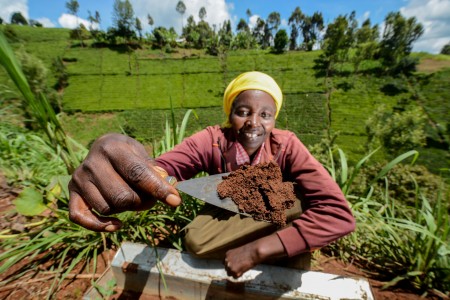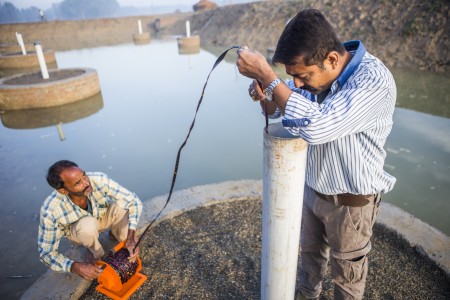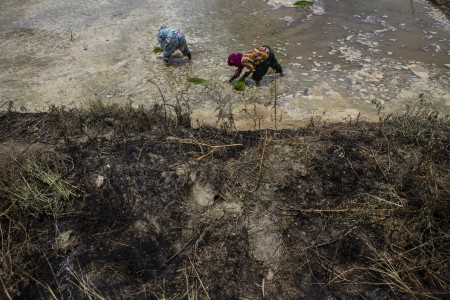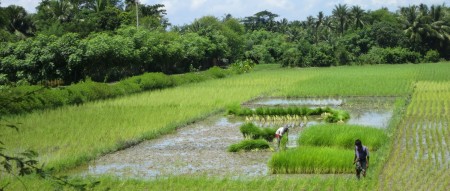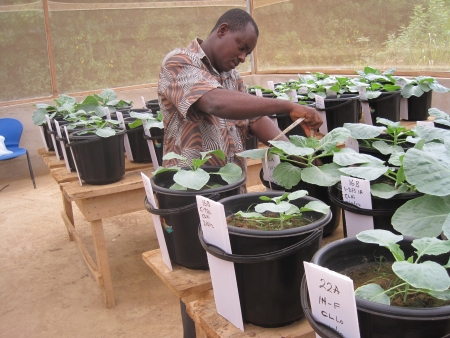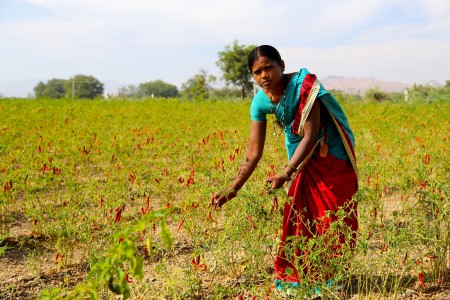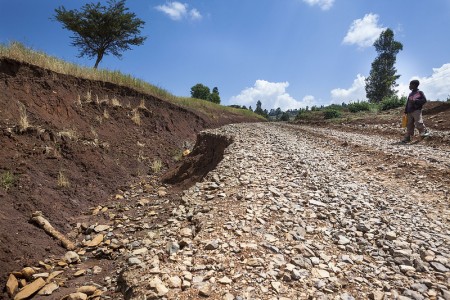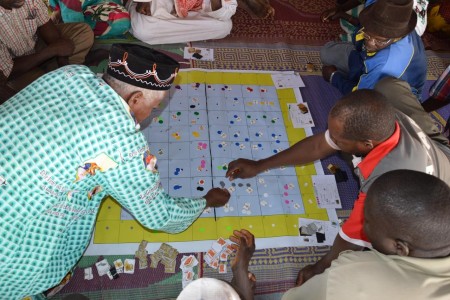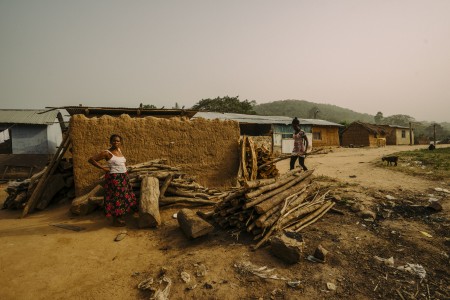The WLE 2016 Annual Report > Influencing policy and decision making

Improving farmer resilience to risk and disaster with satellites
In South Asia, over a billion people are dependent on agriculture for their livelihoods. Many of them are low-income farmers who are very vulnerable to climatic shocks such as floods and droughts. These events adversely affect farming activities, livelihoods and food security. As climate variability increases globally, there is a pressing need to find practical solutions to help these farmers become more resilient to climate shocks.
To address this growing challenge, WLE has been collaborating with a diverse range of private sector, government and research institution in India, and elsewhere in South Asia, to develop solutions for growing climate and water variability. These solutions already have real, positive impacts on farmers’ lives. Insights gleaned from this work in India have also proved crucial in efforts to help the Sri Lankan government cope with severe flooding in 2016.
Using satellite technology to support crop insurance schemes
WLE has been using satellite imaging to support insurance companies to improve existing crop insurance products for smallholder farmers who live in areas with high probability of extreme weather events.
WLE, through the International Water Management Institute (IWMI), has delivered crop damage assessments to Bajaj Allianz, an insurance provider in Bihar, India. In 2016, Bajaj Allianz provided 349,074 farmers with flood insurance as part of Pradhan Mantri Fasal Bima Yojana (the Prime Minister's Crop Insurance Scheme), launched by Prime Minister Narendra Modi earlier in the year. In response to a major flood in August 2016, Bajaj Allianz asked the WLE and IWMI research team for help with estimating the total crop damage. Researchers used satellite images to quickly and precisely assess rice and maize losses in each administrative unit (at block level) across an area of 30,357 ha. With these estimates, Bajaj Allianz was able to cover farmers’ losses with timely payouts of around USD 34 million.
With the goal of making crop insurance available to even more smallholders in the future, WLE and IWMI researchers also partnered with the CGIAR Research Program on Climate Change and Food Security (CCAFS); the Agriculture Insurance Company of India (AICI); Bajaj Allianz; Swiss Re, a Swiss reinsurance company; local government representatives; and farmers to develop a new insurance product.
The new product, called Index-Based Flood Insurance (IBFI), will identify flood thresholds based on an assessment of flood depth and duration, derived through modeling that uses remotely sensed data and flood modelling tools. Payout levels will then be estimated based on historical flood event data and related economic losses. It is expected that index-based insurance will help insurers to rapidly and accurately predict a farmer’s yield loss after a flooding event, unlike traditional insurance which assesses losses on a case-by-case basis, which is time consuming and unsustainable. IBFI will promote payouts through bank transfers directly to farmers, to avoid additional losses through agents. In 2017, more than 200 farming households have enrolled in an IBFI pilot in Bihar.
Mapping for disaster prevention and relief
Satellite monitoring has also been the key to WLE's efforts to help governments and communities respond to flood and drought disasters, through innovative tools such as the South Asia Drought Monitoring System (SADMS) and rapid emergency response mapping. SADMS is a comprehensive, regional drought monitoring system that provides near real-time information on drought risks in easily understandable maps. The rapid response maps are used by the emergency operation center for relief operations and impact assessment. The maps pinpoint locations under stress and provide regional to district scale information about the drought and floods onset, progression and likely impact on agriculture.
SADMS was used by the Sri Lankan Disaster Management Center to inform their response to a serious drought in 2016. SADMS acts as an early warning system allowing government departments, communities and others to take pre-emptive action to mitigate the negative impacts as a situation develops, rather than merely waiting to deal with the repercussions of a drought after it has occurred.
Earlier in 2017, the WLE team also prepared drought maps and statistics for the Rabi (dry) season for drought affected states in India. They then delivered these maps to key government officials as a drought situation was developing that could potentially affect millions of people. The WLE maps indicated that the states of Tamil Nadu, Andhra Pradesh and Karnataka faced severe agricultural drought but that the state of Rajasthan would be less affected, thereby enabling government responses to be more targeted.
By innovatively using cutting-edge technology and linking up with policy makers and businesses, WLE is helping to ensure that smallholder farmers - their livelihoods and food security - are buffered from the most severe impacts of climate variability.
Learn more about WLE's research on enhancing smallholders' livelihoods.
Towards sustainable intensification:
stories of real-world sciencewater, land and ecosystems research highlights
Phase 1
Since its inception in 2012, the CGIAR Research Program on Water, Land and Ecosystem (WLE) has developed scientific evidence and solutions for sustainably intensifying agriculture.
For WLE, sustainable intensification means more than minimizing agriculture’s environmental footprint; it means making sure that agriculture benefits both the planet and its people, providing global populations with food and nutritional security, resilience and livelihoods.
WLE researchers and their partners work across scales, disciplines and sectors to find sustainable, viable ways to transform agriculture, locally and at scale. Discover how the resulting solutions can lead to real-world change by exploring the briefs and stories below to.
New briefs on sustainable intensification
Achieving resilient food systems requires identifying incentives for sustainable farming, developing new policies and institutions, as well as working with diverse stakeholders to test and scale integrated solutions.
The program’s findings so far are summarized in a new series of briefs, Towards sustainable intensification: Insights and solutions.
The series aims to guide and support decision and policy makers, investors and others working to achieve sustainable intensification of agriculture. Each brief is focused on a topic of strategic relevance and provides analysis of and recommendations on how to place sustainability at the heart of agri-food systems.
in 2015 wle: field tested 62 technologies and natural resource management practices, helped 125,000 farmers to apply new technologies or management practices, supported improved technologies or management practices on 2.5 million hectares
Influencing policy and decision making
In 2015 WLE: established 41 multi-stakeholder platforms and influenced 200 policy processes
Promoting innovative business models and institutions
Facilitating community-led science
WLE in 2015 had 110,000 website visits and 43,000 views on CG-space and published 141 ISI publications and 94 open access publications




